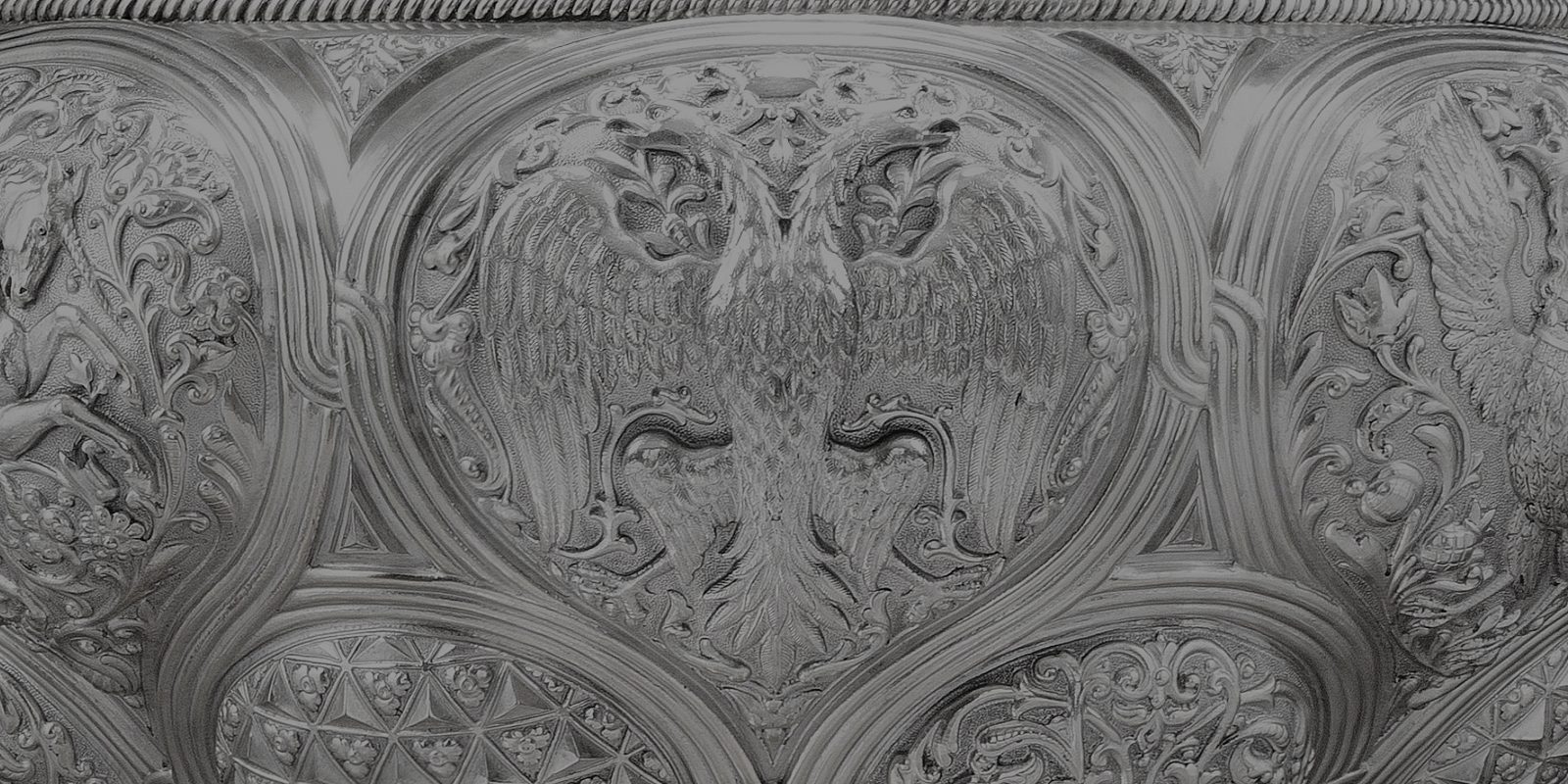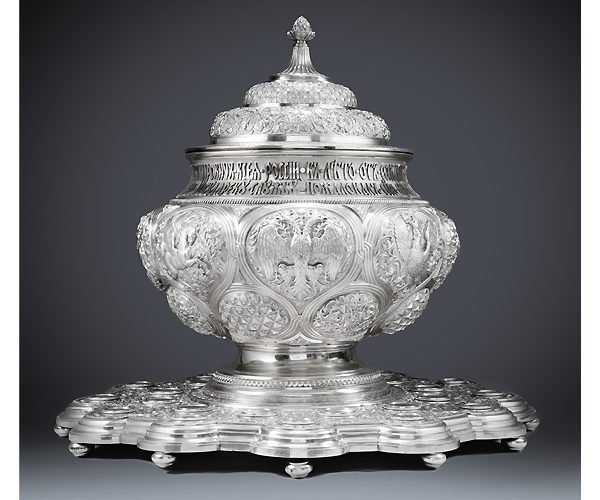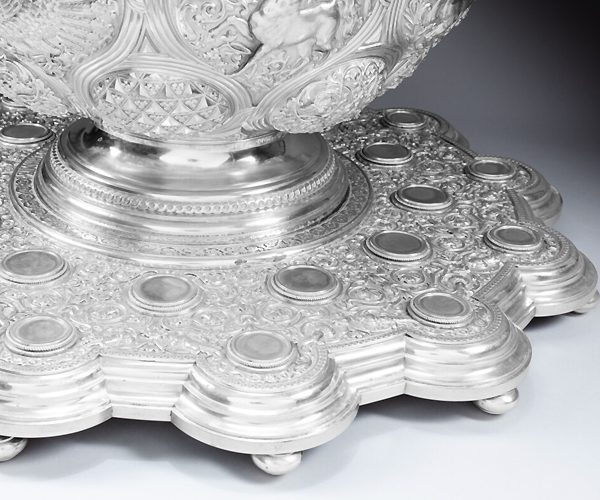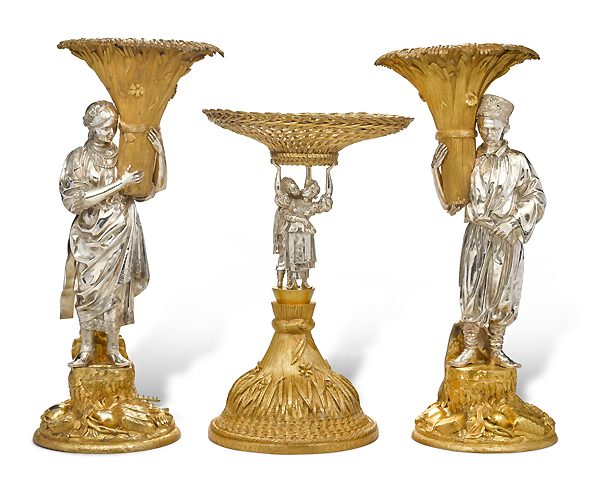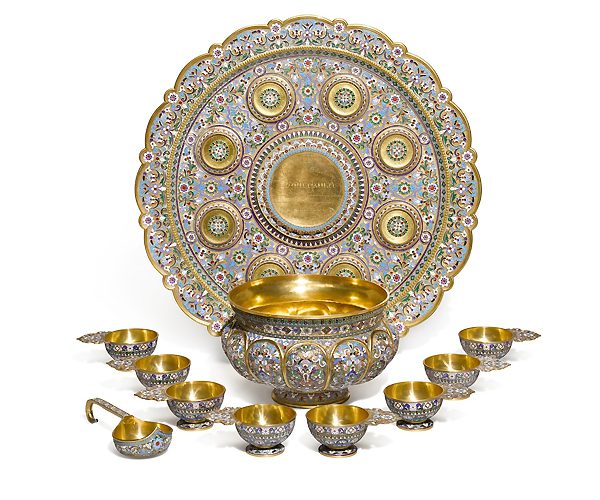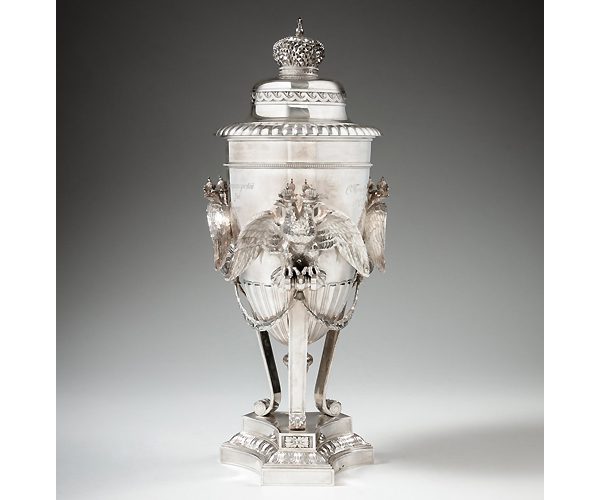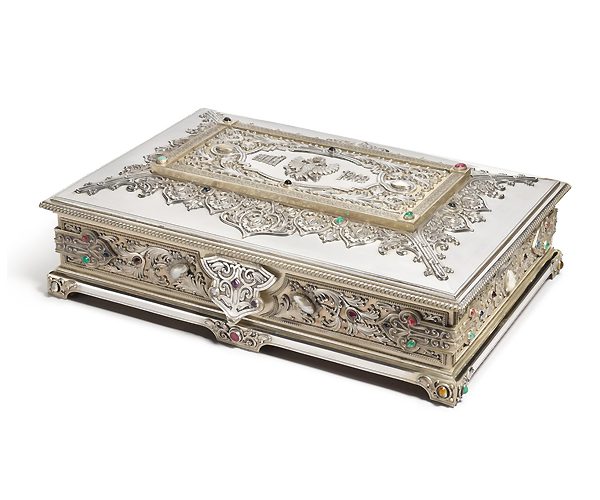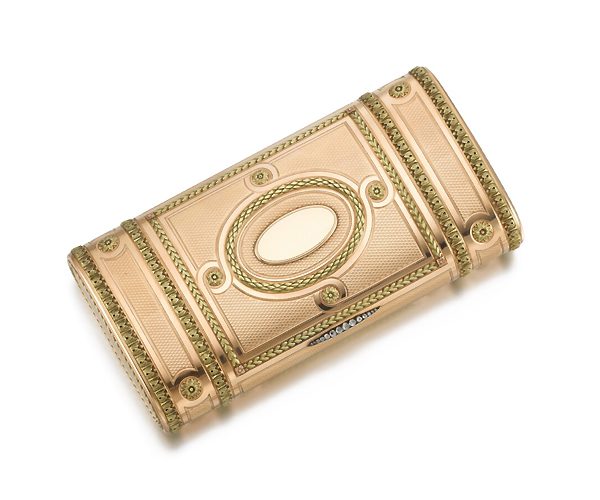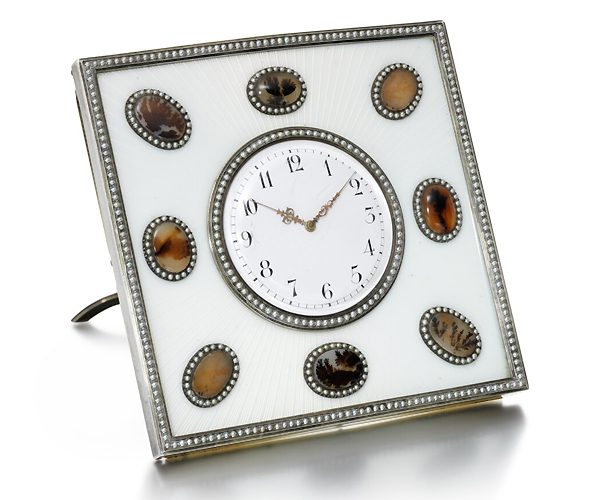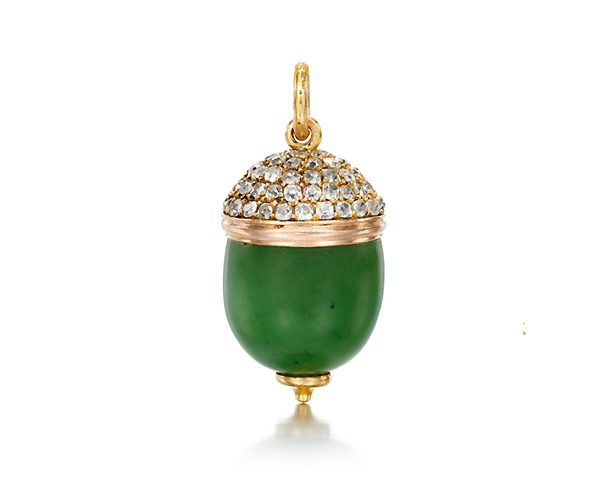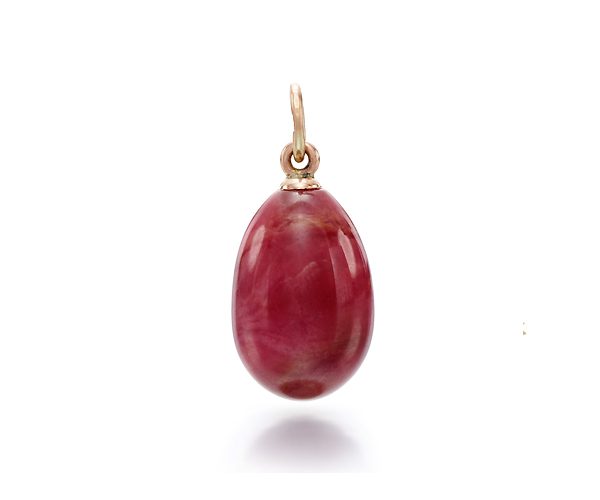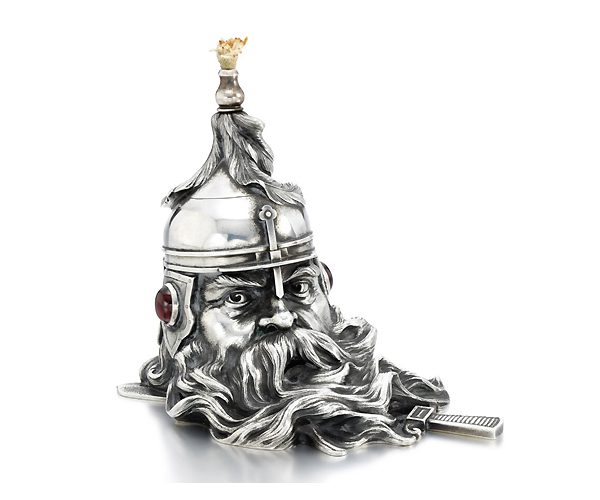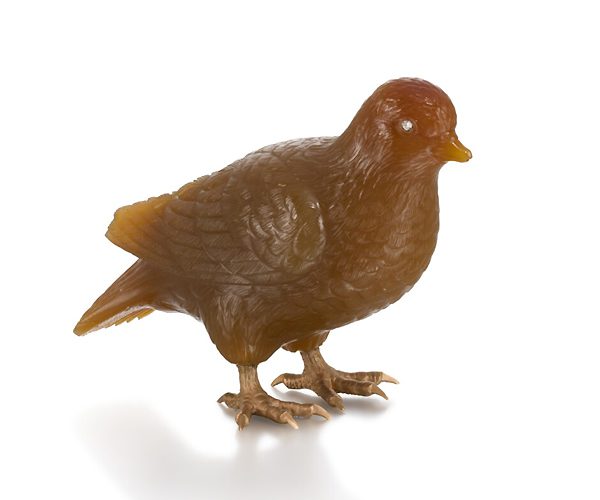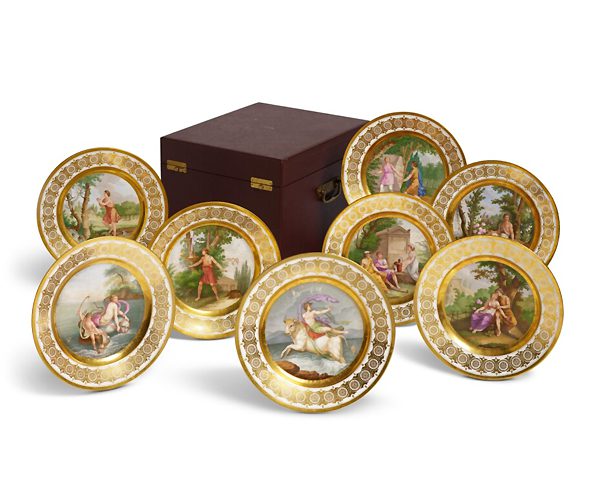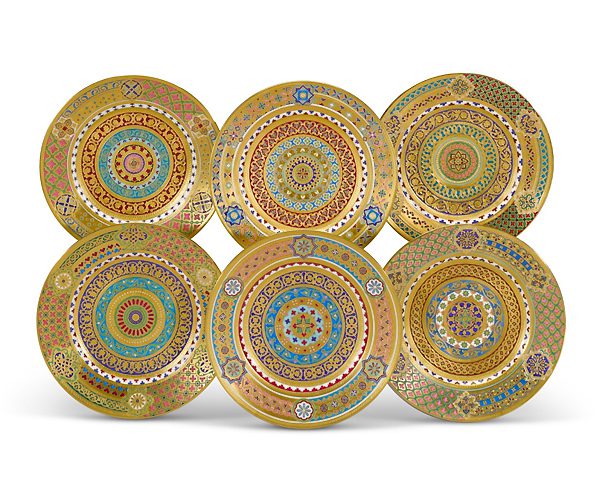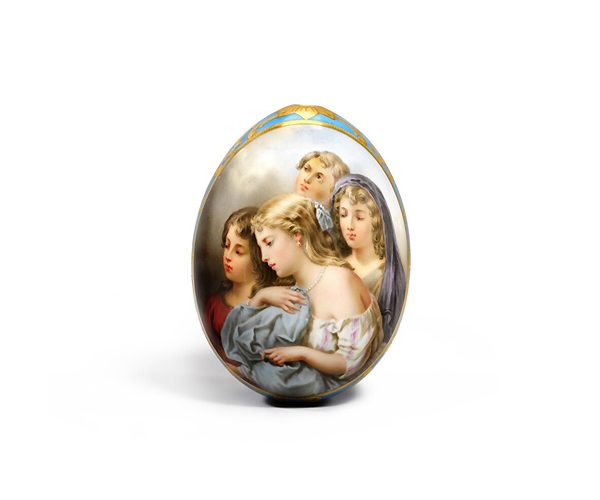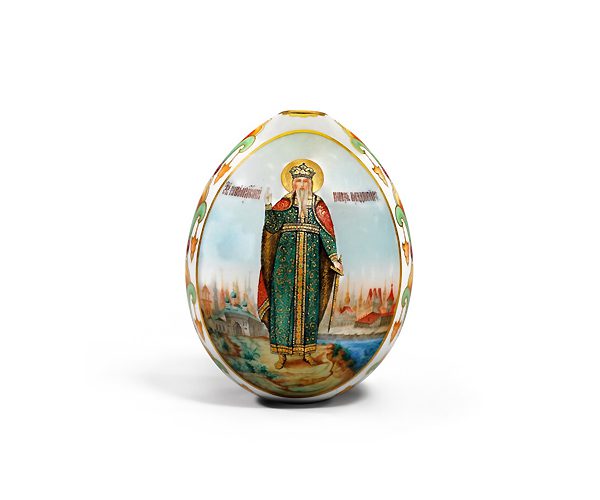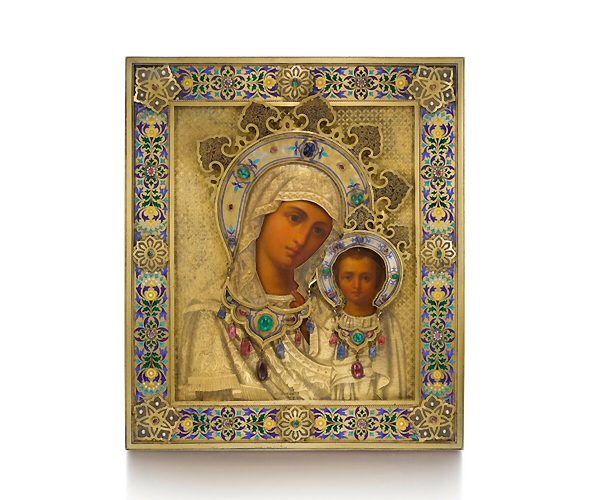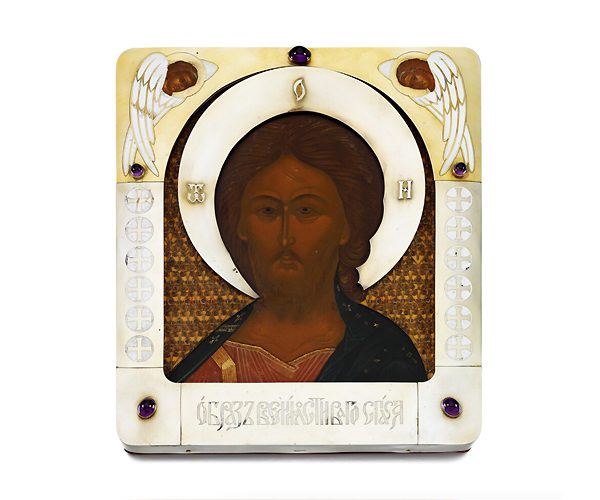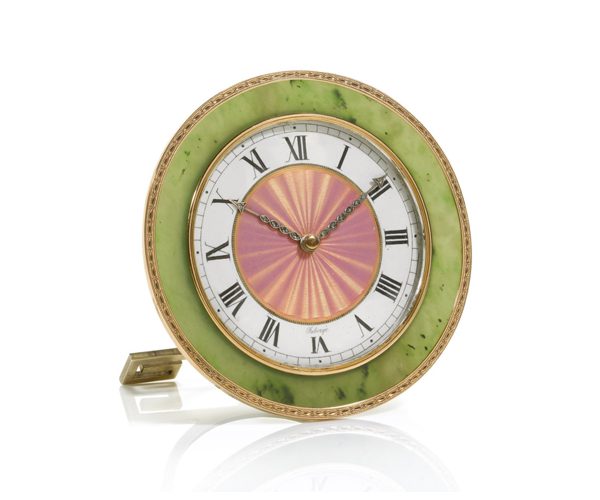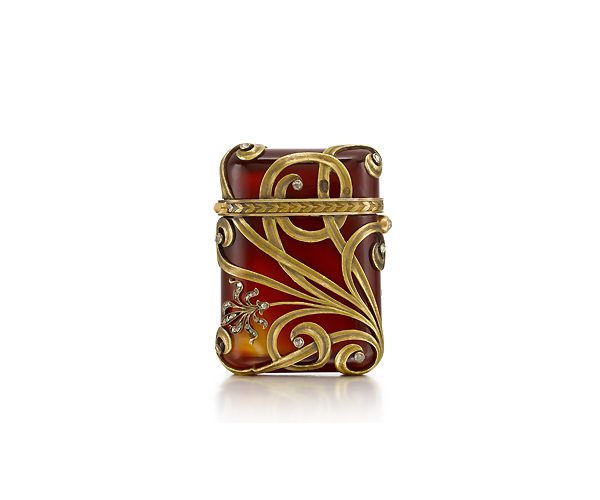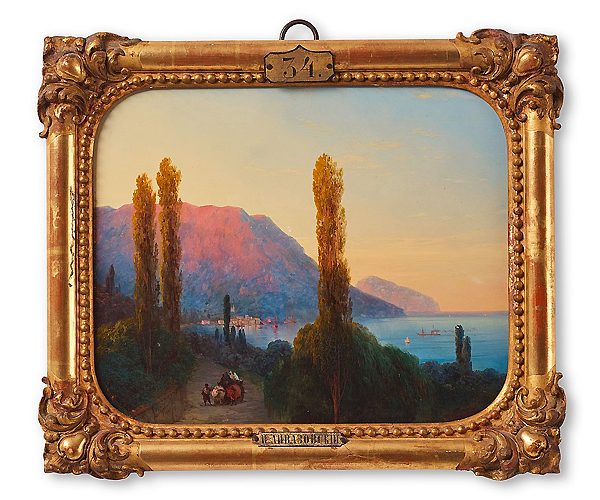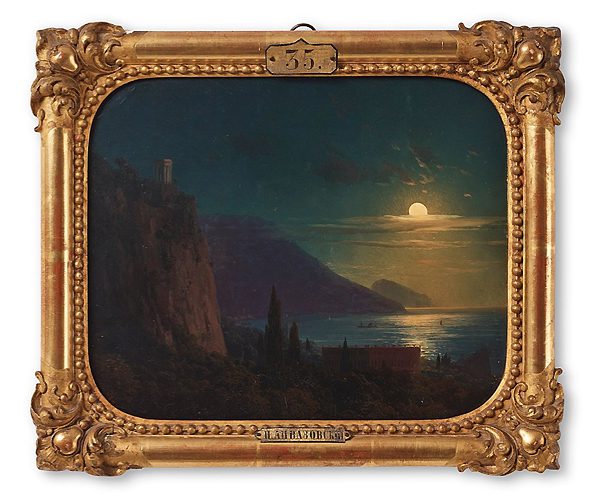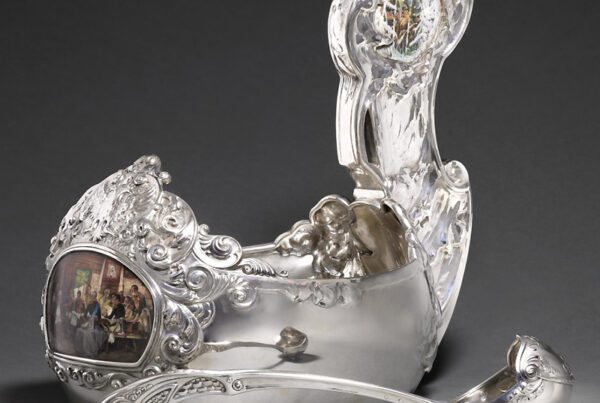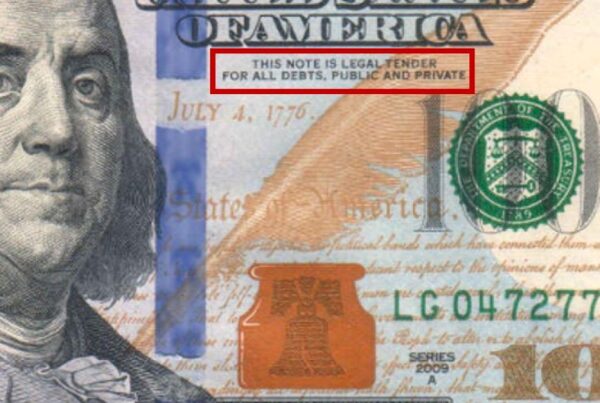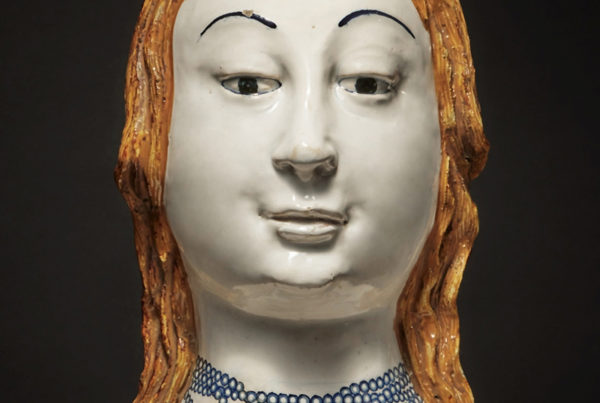Sotheby’s 160-lot London auction of Fabergé, Imperial & Revolutionary Works of Art on July 11 had plenty of tiddly little pieces but nothing, at first sight, of overwhelming importance. Yet there were seven prices of over £100,000 and a further six above £50,000 – so there’s still life in the market yet, despite sanctions and a moribund Russian economy! The sale brought a premium-inclusive £2.84 million with over three-quarters of the lots sold: 124/160 (77.5%).
The sale showed a bit of – I dunno – strength or power, and a continuing interest in things Russian. I was trying to buy some items but failed on all counts. Prices weren’t exactly back to where they were in 2007/8, but they were pretty commendable: good, important stuff sells under any circumstances. There were a number of prices for significant items that surprised me.
SILVER
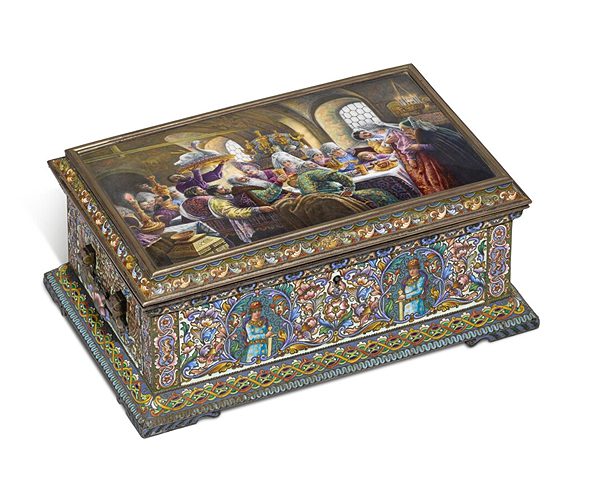
Sotheby’s, 11 July 2023, Lot 45, Silver-gilt, cloisonné and en plein pictorial enamel casket,
Feodor Rückert, Moscow, 1899-1908, lot sold 330,200 GBP
A large, wonderfully crafted silver-gilt and enamel casket by Rückert, with a proverbial Boyar Wedding by Makovsky, raised the highest price of the sale: £330,200, one bid over top-estimate (Lot 45). How many Rückert boxes with the same Makovsky scene have we seen over the years? Is it art? Was it mass production?
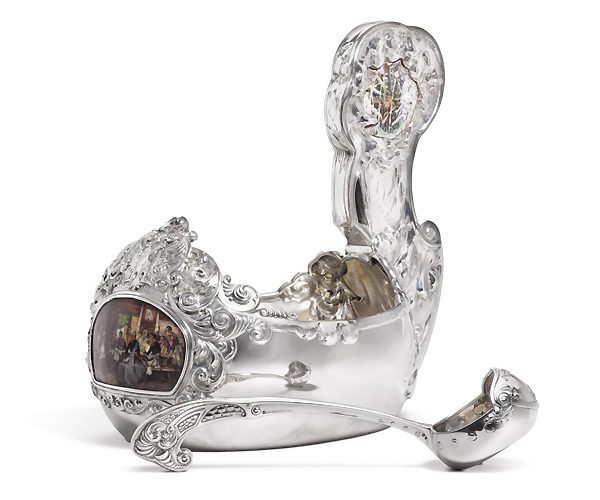
Sotheby’s, 11 July 2023, Lot 44, Large silver and en plein pictorial enamel kovsh,
Egor Cheryatov, Moscow, 1908-1917, lot sold 190,500 GBP
I wasn’t sure about the large silver and enamel kovsch by Egor Cheryatov, yet this big hunk brought an amazing £190,500 (Lot 44). These items, if not quite mass-produced, were pretty common and numerous, so the £120-150,000 pre-sale estimate struck me as excessive. Cheryatov was not such a hotshot silversmith either, and he never excelled in the field of enamel.
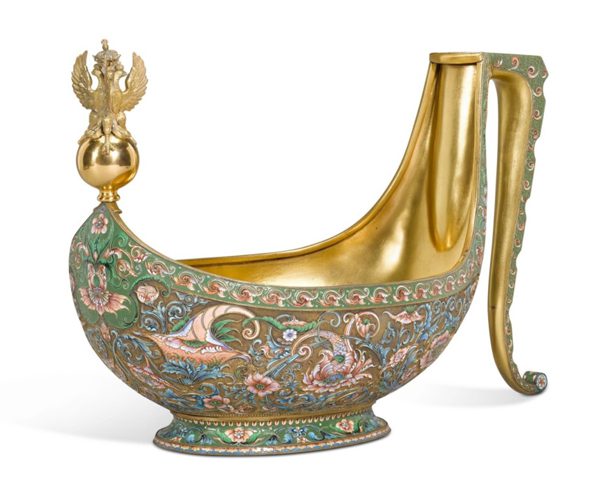
Sotheby’s, 11 July 2023, Lot 46, Monumental silver-gilt and cloisonné enamel kovsh,
Vasili Agafonov, St Petersburg, 1899-1908, lot sold 120,650 GBP
A boring silver-gilt and enamel kovsh by Agafonov, of note only for its size, surprisingly fetched £120,650 (Lot 46). I thought £50-70,000 was a hefty estimate: £50,000 + £70,000 is a price from the heyday of Russian enamels fifteen years ago!
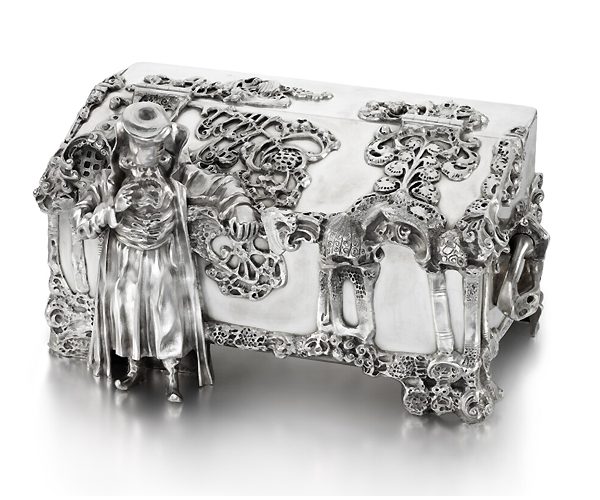
Sotheby’s, 11 July 2023, Lot 90, Large and important figural silver casket,
Khlebnikov, Moscow, 1908-1917, lot sold 120,650 GBP
The fancy, foot-long Khlebnikov silver casket with boyar (Lot 90), purchased in the suburbs of Brussels for €57,900 in March, also sold for £120,650. That’s good business, and a lucky investment! Somebody saw an opportunity and did very well – smart thinking. Mind you, the piece is interesting, and buyers love Russian themes (and boyars). The box is also a decent size (almost 12in long), and Khlebnikov’s a good maker.
- Sotheby’s, 11 July 2023, Lot 99, Monumental and important silver imperial presentation covered bratina and tray, Ovchinnikov, Moscow, 1896, lot sold 165,100 GBP
- Sotheby’s, 11 July 2023, Lot 99, Monumental and important silver imperial presentation covered bratina and tray, Ovchinnikov, Moscow, 1896, lot sold 165,100 GBP
A silver imperial Bratina with tray, designed by Nikolai Sultanov and made by Ovchinnikov, sold over estimate for £165,100 (Lot 99). This thing is monumental – over 25in. high – and ringed with repoussé medallions portraying various creatures and a view of sailing ships outside the walls of Sinop on Turkey’s Black Sea coast (scene of a Russian naval victory in 1853). The base is ringed with an inscription in Old Slavonic about how Alexander III commissioned the piece to mark the construction of the battleship Sinop in Sevastopol in 1883. The original finial – a gryphon rampant brandishing a sword – was replaced at some stage by a less exciting pineapple. Worse, the piece is also lacking its cups – an absence that made the whopping great tray (2ft 6in in diameter) somewhat redundant. Buying it for £165,000 without the cups is like trying to bite your elbow. It’s not complete. Gotta be complete for that kind of money! Whoever bought it may regret it… if they ever pay for it. Most of these things are purchased by Russians, and Russian buyers are notorious for not settling their accounts. Plus they’re barred from Sotheby’s and Christie’s until further notice ….
- Sotheby’s, 11 July 2023, Lot 50, Set of parcel-gilt silver centrepieces, Ovchinnikov, Moscow, 1872, lot sold 95,250 GBP
- Sotheby’s, 11 July 2023, Lot 47, Silver-gilt and cloisonné enamel punch set, Ovchinnikov, Moscow, 1893, lot sold 82,550 GBP
A silver-gilt and cloisonné enamel Ovchinnikov punch-set sold for £82,550 (Lot 47, est. £30-50,000), despite featuring the most mundane enamel you ever did see. A set of rare and attractive parcel-gilt silver centrepieces also exceeded high-estimate on £95,250 (Lot 50). That was understandable, as the two main figures are Ukrainian peasants each brandishing a wheatsheaf – singularly appropriate with Ukraine currently struggling to export its grain.
FABERGÉ
- Sotheby’s, 11 July 2023, Lot 98, Fabergé silver imperial presentation trophy, Moscow, 1899-1908, lot sold 139,700 GBP
- Sotheby’s, 11 July 2023, Lot 43, Fabergé gem-set silver imperial presentation casket, Moscow, circa 1902, lot sold 190,500 GBP
I liked the look of a Fabergé silver imperial presentation casket that Nicholas II presented to the French President in 1902 (Lot 43), so I had no argument with the £100-150,000 estimate: in the good old past, this Fabergé casket would have elicited mighty serious competition – even more than the £190,500 it fetched here. An elegant Fabergé silver imperial presentation trophy sold for £139,700, over triple-estimate (Lot 98). No surprise – it’s a great piece. A number of these imperial cups were produced in different shapes and sizes; this one’s a bit taller than most.
- Sotheby’s, 11 July 2023, Lot 25, Fabergé varicoloured gold cigar case, workmaster Henrik Wigström, St Petersburg, 1896-1907, lot sold 50,800 GBP
- Sotheby’s, 11 July 2023, Lot 34, Fabergé silver-mounted guilloché enamel and dendritic agate desk clock, workmaster Michael Perkhin, St Petersburg, circa 1890, lot sold 30,480 GBP
A varicoloured gold cigar case by Wigström unexpectedly elicited enough competition to commandeer a hefty £50,800 (Lot 25). An unprepossessing, square white enamel and agate desk-clock by Perkhin (Lot 34) was, as I predicted, the only clock to find a buyer – though the £24,000 hammer price was 20% short of low-estimate. I called it a cockroach clock. I imagine it was snaffled by some smart-ass who’ll replace all the damaged pieces, and we’ll soon be finding the clock in another sale with perfectly fitted pieces of moss agate or some other, more attractive stone. I was sceptical about the £50-70,000 estimate assigned to a pretty but mundane triangular red enamel Perkhin desk-clock (Lot 17), and it duly failed. So did a circular green enamel Wigström clock (Lot 24, est. £65-85,000) that brought a whopping premium-inclusive £109,250 in 2011. Those were the days, my friend!
- Sotheby’s, 11 July 2023, Lot 8, Fabergé jewelled gold-mounted nephrite vinaigrette egg pendant, workmaster Henrik Wigström, St Petersburg, 1908-1917, lot sold 30,480 GBP
- Sotheby’s, 11 July 2023, Lot 9, Fabergé gold-mounted rhodonite egg pendant, St Petersburg, circa 1900, lot sold 13,970 GBP
But who in the world can have paid £30,480 for Wigsgtröm’s mundane diamond and nephrite vinaigrette egg-pendant (Lot 8, est. £5-7,000)? – Probably someone who’s got nothing but money, so that’s OK…. The same applies to the pendant made from a small chunk of rhodonite, and a few milligrams of gold, that fetched £13,970 (Lot 9). Why would anybody want to pay that amount for such a primitive thing? I’m not even sure it’s actually Fabergé. The buyers of these two items must have been in need of some urgent gifts, money notwithstanding – that’s the only way I can explain the hefty prices.
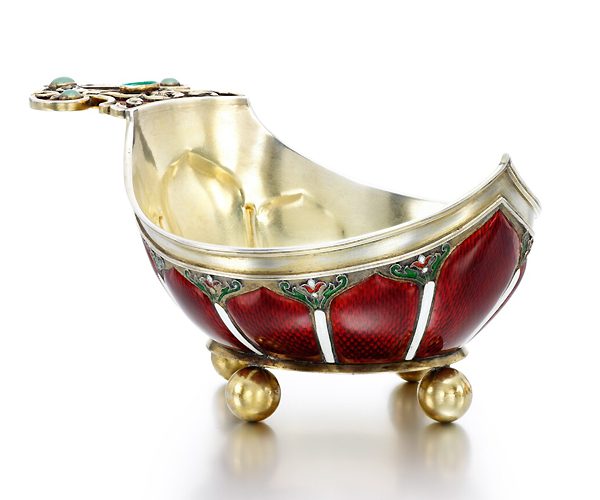 Sotheby’s, 11 July 2023, Lot 22, Fabergé gem-set silver and enamel kovsh,
Sotheby’s, 11 July 2023, Lot 22, Fabergé gem-set silver and enamel kovsh,
workmaster Viktor Aarne, St Petersburg, circa 1890, lot sold 24,130 GBP
I looked carefully at Lot 22, a red enamel kovsh. Unfortunately the enamel has a large, poorly repaired kink. I don’t suppose the geezer who paid £24,130 is going to be too thrilled about that. Hopefully the extent of the damage was detailed in the Condition Report.
- Sotheby’s, 11 July 2023, Lot 67, Fabergé gem-set silver table lighter in the form of a bogatyr’s head, workmaster Julius Rappoport, St Petersburg, circa 1890, lot sold 33,020 GBP
- Sotheby’s, 11 July 2023, Lot 35, Fabergé jewelled gold and agate model of a pigeon, St Petersburg, circa 1900, lot sold 10,160 GBP
The three Fabergé silver figures (Lots 67-69) did okay. A tiny agate Pigeon with diamond eyes made a top-estimate £10,160 (Lot 35). The hapless bird has suffered during its lifetime – a crow or eagle seems to have attacked it and pecked off some of its feathers.
A string of run-of-the-mill Fabergé silver-mounted glass decanters all sold above estimate (Lots 59-66) – rather amusing, given that none were particularly rare. You can buy such commercial merchandise all the time, or at least you could. One with a handle in the form of a bearded head – probably Tolstoy’s, surmised the catalogue – tripled estimate on £30,480 (Lot 66).
PORCELAIN
- Sotheby’s, 11 July 2023, Lot 112, Set of eight pictorial porcelain plates, Imperial Porcelain Factory, St Petersburg, period of Alexander I, 1810-1820s, estimate 30,000 – 50,000 GBP
- Sotheby’s, 11 July 2023, Lot 111, Set of six porcelain plates, Kornilov Brothers Porcelain Factory, St Petersburg, 1880s to 1917, lot sold 33,020 GBP
Sotheby’s slapped a long-ago £30-50,000 estimate on a set of six porcelain plates from the Kornilov Brothers factory (Lot 111) and on eight pictorial Imperial Porcelain plates from around 1820 (Lot 112). No surprise that the Kornilov plates sold under estimate (£26,000 hammer) while the IPF plates didn’t sell at all.
- Sotheby’s, 11 July 2023, Lot 121, porcelain Easter egg, Imperial Porcelain Factory, St Petersburg, 1860-1870s, lot sold 5,080 GBP
- Sotheby’s, 11 July 2023, Lot 122, St Vladimir: a porcelain Easter egg, Imperial Porcelain Factory, St Petersburg, 1890s, lot sold 8,255 GBP
Lots 120-127 were devoted to 19th century Imperial Porcelain Easter eggs. Most sold well, for prices reminiscent of 2007. One signed A.K., depicting four female figures, collected £5,080 (Lot 121), while an 1890s St Vladimir egg after a design by Osip Chirikov took £8,255 (Lot 122).
Most porcelain pieces, however, were uninteresting and remained unsold. Soviet porcelain typically does well thanks to nostalgia for the Civil War, Red Terror and revolutionary devastation… a period some hapless folks look back on with tenderness. A large Soviet porcelain plate after a design by Alexandrina Shchekotikhina-Pototskaya, depicting three men at a card-table and made by the State Porcelain Factory in 1921, pulled in a double-estimate £69,850 (Lot 145).
OTHER STUFF
Six of the eight boring non-Fabergé decanters, that some poor soul spent maybe a lifetime collecting, found takers (Lots 71-78). The lacklustre enamel pieces you find in every sale (Lots 80-88) threw up a top price of £35,560 for twelve cups and saucers by Semenova of Moscow (Lot 83, est. £4-6,000).
- Sotheby’s, 11 July 2023, Lot 127, Gem-set silver-gilt and champlevé enamel icon of the Kazanskaya Mother of God, Sazikov, St Petersburg, 1867, lot sold 76,200 GBP
- Sotheby’s, 11 July 2023, Lot 133, Gem-set silver-gilt and champlevé enamel icon of Christ, 1st Moscow Artel, Moscow, 1899-1908, lot sold 76,200 GBP
There were two silver-gilt and champlevé enamel Icons of distinction: one by Sazikov (1867) starring the Kazanskaya Mother of God (Lot 127), the other an Art Nouveau affair harbouring Jesus Christ, produced by the 1st Moscow Artel (Lot 133). Both sold for £76,200: pretty strong prices.
The Bronzes near the end of the auction (Lots 152-158) were by the usual makers/ producers/ suspects, and nothing to write home about. The majority were unsold, although a 22-inch bronze and malachite model of the Alexander Column outside the Winter Palace took £15,240 and a Grachev troika trotted to £16,510.
*
The results of the sale suggest the market is definitely alive. I hear from sources in Russia that the local market there is doing well, if not exactly thriving. Although people travel less and less, collectors are still hungry… and right now there’s not a great deal on offer. A lot of people just don’t travel any more, because it’s become so darned difficult. For Russians, obtaining a visa for America or the U.K. is tougher and tougher, and getting from Moscow to London has become a pain in the ass. There used to be a direct 3½-hour flight. Now the quickest route is via Istanbul, and you have to change. Takes God knows how many hours.
*
LORDS & LADIES
My wife and I went to view the items before the sale, and came across Helen Culver-Smith – Sotheby’s European Director of Silver, Fabergé & Russian Works of Art. Ms Culver-Smith knows I am a serious buyer and collector of Russian works, yet she did not deign to acknowledge our presence – prancing by without a hello. I guess she’s still pissed off about my report on Sotheby’s Geneva sale last November, when I expressed doubts about a half-finished ‘Fabergé’ owl made from an ungainly lump of smoky quartz. Not only did I find its ‘scratched inventory number’ unconvincing, I called the sloppy catalogue entry – which confused Empress Alexandra (wife of Nikolai II) with Queen Alexandra (wife of Edward VII) – ‘speculative tosh’ written ‘by some unpaid intern.’ How was I to know Her Ladyship had written it herself?
I don’t mind being cold-shouldered by Sotheby’s grandees, but a little civility wouldn’t come amiss. I thought Sotheby’s staff were expected to be courteous to clients? Especially those with a largish stock of Russian material… that might one day find its way into the saleroom. It’s not as if there are many people in London dealing with Fabergé and Russian stuff on a meaningful scale.
FREDDIE’S FABERGÉ
After selling LeBron James’s sweaty basketball jersey and Kobe Bryant’s smelly basketball shorts , Sotheby’s turned their attention to Freddie Mercury’s mucky Adidas sneakers (size 8½) in London on September 6. These were made of white cotton with black felt stripes and cream suede toes and heels, as the catalogue informed us excitedly, and had last been cleaned in the 1980s. They also had white laces and nylon lining, and an Adidas brand logo printed in black on the tongues. Nylon lining and cream suede being fairly rare these days, the sneakers sold for a ridiculous £127,000 (Lot 58).
- Sotheby’s, 6 September 2023, Lot 4, Fabergé jewelled pink gold and silver-mounted guilloché enamel nephrite desk clock, workmaster Henrik Wigström, St Petersburg, 1908-1917, lot sold 69,850 GBP
- Sotheby’s, 6 September 2023, Lot 6, Fabergé Jewelled gold-mounted agate vesta case, Moscow, circa 1890, lot sold 95,250 GBP
It’s not that I’ve anything against Freddie Mercury, famed frontman of the rock-group Queen. Unlike many rockstars, Freddie had taste. He liked Fabergé. The sale included two Fabergé items bought at Sotheby’s Geneva a few months before his untimely death in 1991: a circular nephrite and translucent enamel desk-clock by Wigström that cleared top-estimate with £69,850 (Lot 4); and a gold-mounted, diamond-studded apricot agate vesta-case (Moscow c.1890) that sparked a price of £95,250, ten times what was predicted (Lot 6). Sadly, despite his love of Fabergé, the mercurial Mr Mercury (who grew up in Zanzibar) never made it to Russia – even though the youthful Vladimir Putin was a big fan.
SAZIKOV
The Kremlin Armoury owns a silver statuette of a Russian Knight standing by his horse – commissioned by Nikolai I from Ignaty Sazikov in 1852, a year after Sazikov had earned a Gold Medal at London’s Great Exhibition. Russian silver is unlike English or French: Russia produced primarily cutlery and dainty boxes – hardly any statuettes of this kind, until Ignaty Sazikov (1796-1868) came along. English silver reigned supreme in the 19th century, but the Kremlin piece is of superlative quality, very similar to English work. It stands on a highly elaborate, Louis-XV style rocaille base attributed to Samuel Arnd of the firm Nicholls & Plinke (who worked for the imperial court in St Petersburg from 1844).
As if by magic, an almost identical piece surfaced ten years ago at auction in France: at a small Paris firm called Rossini on 26 April 2013, when it fetched €123,750. It appeared to be undated and, although it was granted an estimate of €10,000-18,000 – one of the highest in the entire 122-lot catalogue – it was not illustrated. It was described as a Cavalier Ottoman (‘Turkish Knight’) by Pavel Sazikov, Ignaty’s son (who nonetheless predeceased Ignaty by over a decade). It was on an oval base, its weight given as 10.3kg, its dimensions as 39.5 x 41cm.
Then, on 6 August 2023, the same model appeared yet again – in another small French auction-firm, in Biarritz down near the Spanish border, with an estimate of €60-80,000. It was catalogued as Cavalier en Patrouille (‘Knight on Patrol’) by Sazikov (no first name given). It sold for €77,280. It was dated Moscow 1873 and its dimensions given as an almost identical 40 x 41cm, though it was not so heavy (8kg).
AYVAZOVSKY
Two coastal Crimean views by Ivan Ayvazovsky surfaced at Bukowski’s Stockholm in mid-June. They were once owned by Tsar Alexander III but consigned by a Swedish family that acquired them in Stalin’s time. I saw them at their home near San Francisco thirty years ago.
- Bukowski’s, 14 – 16 June 2023, Lot 839, Dawn over Yalta, Ivan Constantinovich Aivazovsky, 1861, lot sold 4 050 000 SEK
- Bukowski’s, 14 – 16 June 2023, Lot 840, Crimean night, view of Oreanda and Aiu-Dagh, Ivan Constantinovich Aivazovsky, 1861, lot sold 4 000 000 SEK
Dawn over Yalta made SEK4.05m (£292,000) hammer; Night View of Oreanda SEK 4m (£289,000). Both prices were low-estimate. Each work was oil on panel 25.5 x 30.5cm and dated 1861. Both views were painted near the (since destroyed) Oreanda Place looking north towards Yalta, with the Ayou-Dag mountain looming in the distance. The morning view featured foreground cypress trees, the nocturne Oreanda’s clifftop rotunda.
In early August in Biarritz – catalogued by front-rank Russian art expert Maxime Charron – two similar, very slightly larger Ayvazovskys each sold above estimate for a premium-inclusive €96,600. One, in oil on board and dated 1864, showed the Moon Above Ayou-Dag. The other, in oil on canvas and dated 1875, showed a Terrace with Palm-Trees on a Moonlit Night. Their provenance was given as ‘an Armenian family exiled to France.’
Putin or no Putin, Ayvazovsky keeps coming up Trumps (though hopefully Putin’s pal will be behind bars before he gets re-elected). Russians are readier than ever to pay a big money for Ayvazovksy works… especially peaceful coastscapes evoking happier times.
CANADA DENIES IMPUNITY TO PUTIN’S PAL PIOTROVSKY
On July 19 (though the international media only picked up on the news at the start of September) Canada added Mikhail Piotrovsky to its list of Russians sanctioned for ‘promoting Kremlin propaganda’ as ‘Russia seeks to destroy Ukrainian culture and identity.’
Canada is the first country (after Ukraine) to impose sanctions on the crooked 78 year-old Hermitage boss.
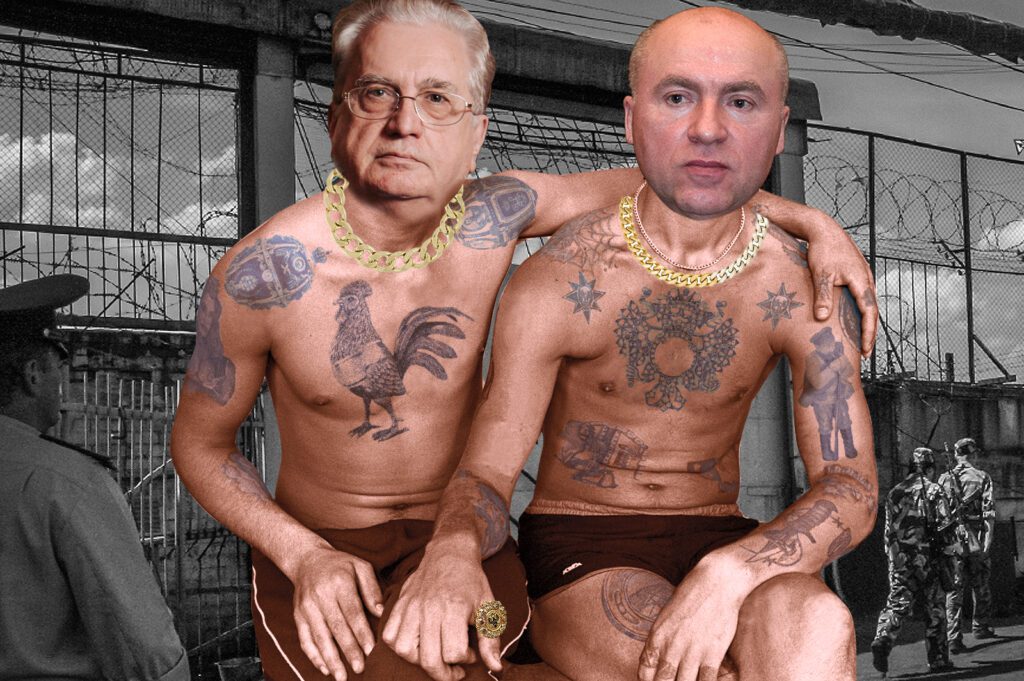
Heartfelt congratulations, Dear Misha! Your sanction is richly deserved – for cheating the Russian people and destroying the Hermitage’s international reputation, in cahoots with your chum ‘Professor Emeritus of Faberge’ Ivanov!

